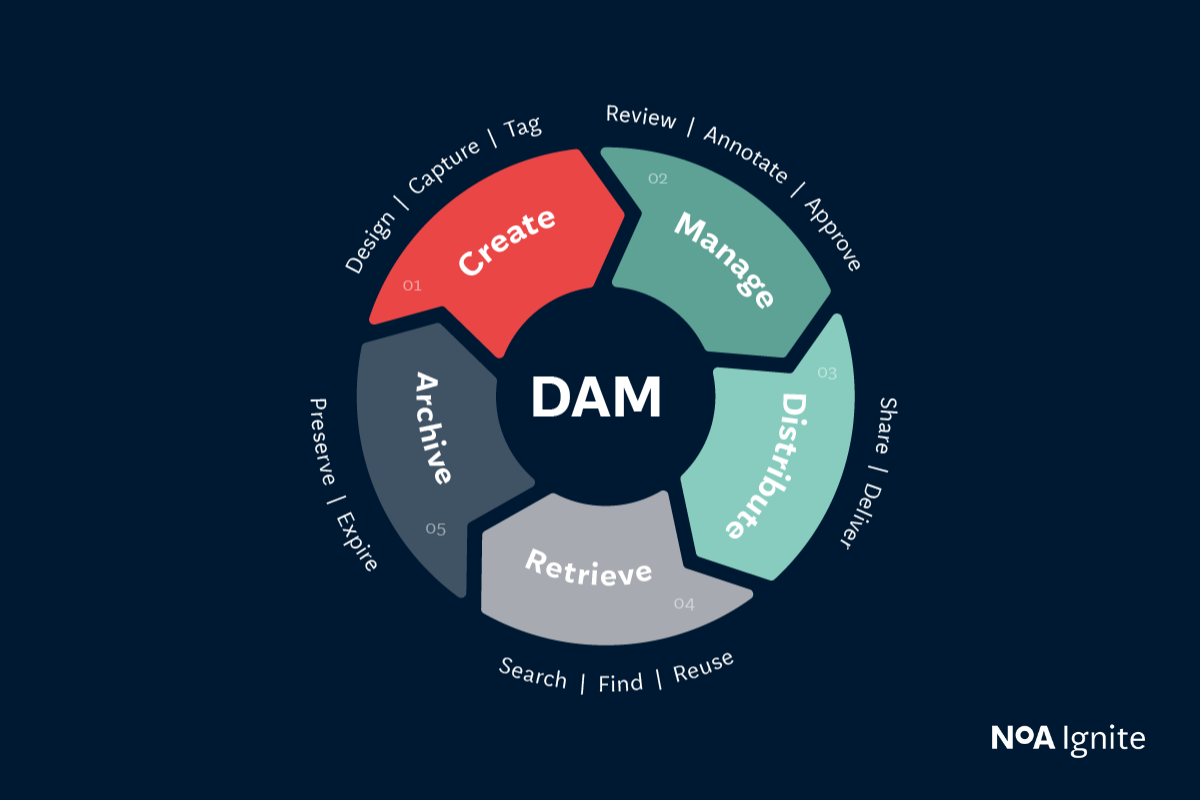DAM with Optimizely CMS – get more value from your digital content
January 26, 2023 / 3 min read

Photo by Jan Antonin Kolar on Unsplash
In today's demanding world, almost every company must use multiple tools and systems to achieve its goals. It can be frustrating, and having them aggregated or connected would be appreciated. Read in our article how integrated DAM can help you optimise your daily work.
As the digital industry is bigger and bigger, it is understandable that this scenario concerns companies working in this area. One of the examples can be the business that creates both websites and their content. Widely understood integration can be found even in Content Management Systems (CMS) like WordPress. CMS can be extended by plugins that offer many conveniences. However, this type of extension is often a small program. What if there is a need for integration with a large system?
You would need to look for something else, like Optimizely CMS, a mature, safe, and complex content management system that, among other things, offers mechanisms to integrate systems just as big as Optimizely itself. The CMS allows user to manage content and add text, reusable elements, images, and other assets. Although this kind of system offers tools to organise multimedia, sometimes more is needed – a design specifically for that type of task. Platforms enabling all this are called Digital Asset Management (DAM) software and include asset version management, having multiple metadata, or advanced search.

What is an Integrated DAM?
Of course, it is possible to have CMS and DAM, download assets from the DAM platform to insert them into the CMS later, but this approach could be more efficient. It is desired to have them integrated and move an asset from the management panel in the CMS to the target place with any update made in DAM automatically in place. Optimizely CMS allows us to implement this kind of cooperation.
Integrated DAMs vs. Regular DAMs
DAMs centralise and streamline content that can be used in many ways, combining convenience and control with integration. This integration is a sign of our times. Society is built on inclusion, and companies need it too.
DAMs centralise content and streamline its management. Integration, however, makes DAM even more powerful. A good integrated DAM allows you to incorporate resources and software into your workflows, automation and campaigns. For example, you can integrate your DAM system with an image editor, social media accounts, CMS, CRM, customer support software and more to combine the convenience of content ownership with brand management consistency and compliance.
Benefits of DAM Integration
Although having connected systems might be a big advantage, it doesn’t end with that. Integration opens doors for many opportunities.
Easy file access
In cloud-based solutions everybody can have access to files anywhere. Assets are also automatically updated on your channels and platforms. It reduces the risk of outdated files being used.
Safety assets
Access rights and permissions can be tailored for different users, ensuring the right people have access to the correct files. DAM eliminates the risk of losing important and confidential files by providing safe and secure storage in one location.
Development of your business
Systems can be extended with new functionalities, which can be crucial for a business to offer new services that will increase the absolute value of the company. However, this kind of functionality might be costly in case of money and time to implement. Therefore, choosing integration means it can be achieved using already created solutions, which brings savings.
Furthermore, integration of the extensive system is an interesting technical topic, which can increase the skills and experience of the IT team, for which it can be quite a challenge and opportunity to broaden your horizons with new technologies.
Integration DAM with Optimizely CMS
Integration between two systems can be achieved in many ways. In the case of Optimizely CMS, it includes two powerful mechanisms: scheduled jobs and content providers.
Scheduled jobs
The first allows us to perform tasks in specific periods – the system administrator decides when and how often it executes and returns a customisable status message after every cycle job. Although cooperation can be done with scheduled appointments, creating content based on external sources using the CRUD interface, the content provider, and jobs is more recommended.
Content providers
The provider manages to complete creating or updating content itself out of the box, and the CMS system takes more responsibility for the process. What is left to do is to configure the provider and point where to find data and how to map it to Optimizely content.
In this configuration, scheduled jobs provide complete synchronisation data or delta updates, which depend on the specific DAM system. It’s nice to have a functionality that the DAM system sends a notification to CMS after every asset's change, which brings an opportunity to have every update after a few seconds in the second system.
The most crucial area to implement by the company’s developers are cache layers – this is important in project performance. One of the approaches is to have a memory cache that is used as a source of data for every request. On the other hand, that cache takes data from the database cache, where every item is synchronised directly from a scheduled job, so basically from the source of data – the DAM system.
Summary
A well-integrated DAM allows you to search for content, connect different digital infrastructures across other content management systems, and balance the convenience of having the images needed for campaigns with the consistency and compliance of brand management.
Bibliography
https://www.optimizely.com/insights/blog/integrated-dam/
Author

Damian Smutek
.NET Developer
Damian is a .Net developer with over 5 years of experience. Most of his projects and experience he has gained in digital cross-country projects leveraging Optimizely CMS as a platform.
Related articles
![A well-crafted prompt doesn’t just work once. It works across teams, channels, and campaigns. It can be tweaked for new use cases and refined based on what performs best.]()
June 27, 2025 / 4 min read
Prompts are marketing assets: how to reuse, and scale them
Prompts aren’t throwaway lines. They’re repeatable, scalable assets that can streamline your marketing your team’s output. Learn how to build a prompt library that delivers.
![Woman using a wheelchair in the office settings]()
June 17, 2025 / 5 min read
What is accessibility and why it matters?
Accessibility ensures everyone — including those with disabilities or limitations — can read, navigate, and engage with your content equally.


